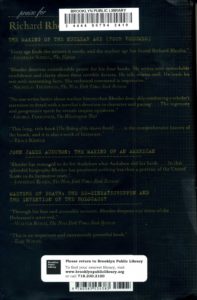BrainChains: Discover your brain, to unleash its full potential in a hyperconnected, multitasking world – by Theo Compernolle
Brain Chains are habits that keep our minds and talents locked up so that we do not think deeply or creatively.
This book of over 500 pages I found repetitive and sometimes tiresome but I kept reading. However, it did change the way I spend my day; maybe the repetition was needed for that.
There is a very neat simplification of brain function: reflex brain, reflecting brain, and archiving brain.
The reflex brain takes over when there is an emergency or when we use deeply learned skills, it does not work things out.
The reflecting brain is the conscious working and learning and evaluating function but cannot think about more than one thing at a time.
The archiving brain takes over when the reflecting brain is unoccupied, as during sleep, to store and tie together newly learned information and integrate that with what is already known.
The main point of the book is that we cannot reflect on multiple things at the same time, we can switch tasks but there is a big loss of time and accuracy in too much task switching. Also, we need down-time otherwise stuff does not get archived and integrated, so the time spent taking in ideas is wasted.
The main concern is that in the current electronically networked world we are too easily tempted to multitask ourselves into inefficiency by wrong use of the gadgets and services. We can seem to be very busy and important but our achievements are trivial with mistakes.
The big example in the book is using a mobile phone while driving. Theo rightly says this is dangerous and wrong. I have always thought the same and never use a phone as driver of a moving car, but while at the desk I had fallen into bad ways.
It is not that I did not know that I was wasting time checking emails too often and wandering into reading articles but I needed a big reminder of how stupid this is. This book did it for me; I confirm that I now get more useful things done with less stress and more spare time.
Another useful tip he mentions, which I knew anyway but never really used, is to plan the main jobs for a day the evening before. We all have lists but they can be overwhelming if looked at in the morning; one then agonizes and oscillates over which task to start on. So I look at my list the previous evening and choose three items that I then write on paper to rest on my desk. I have to decide within 10 minutes so no time to agonize. Next day I start on the first one. Of course there will be interruptions and other urgent things that come up but after dealing with any such one drops back to the small list. Some items on the list may take days and need to be broken into day sized pieces so that there is an end point each day.
I recommend reading this book.














